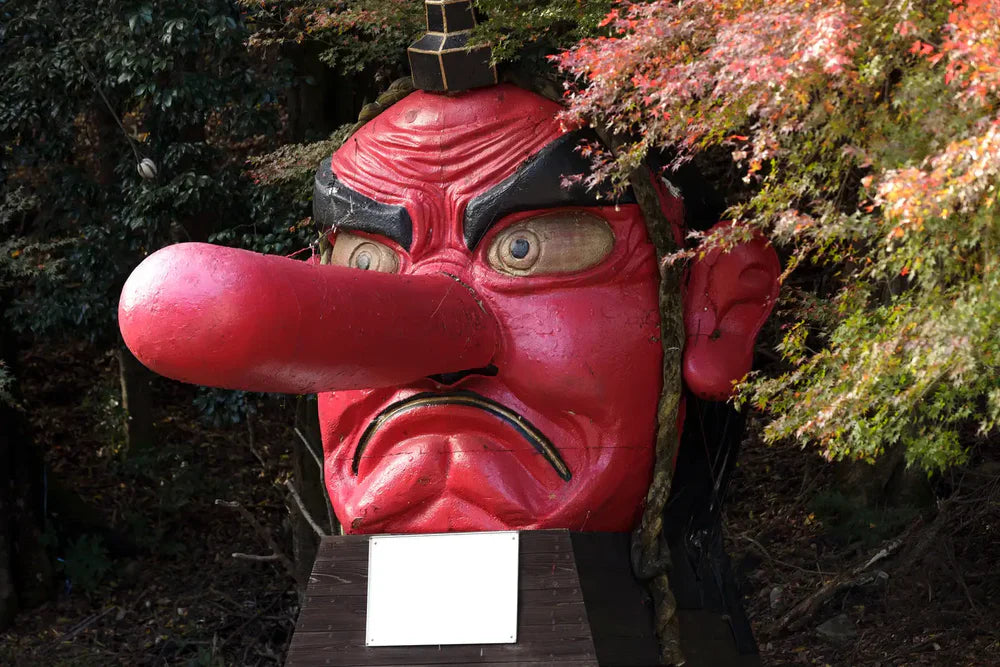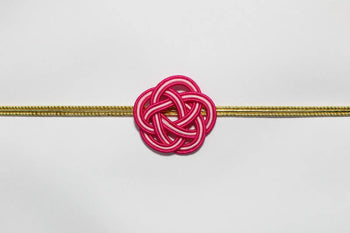

Table of contents
Japan is a land where ancient traditions meet modern innovations, and nowhere is this more evident than in its captivating folklore. Among the many fascinating elements of this cultural heritage are yokai — mysterious creatures that embody the fears, hopes, and imaginations of the Japanese people.
What Are Yokai?
- Diverse forms : They come in a variety of forms, from animals and inanimate objects to human-like forms.
- Breadth of personality : They can be good, bad, or neutral. Each has its own unique story.
- Cultural influence : They are rooted in anime, literature, and even festivals.
Yokai refer to "mysterious things," and their names, forms, and folklore vary from region to region. For example, in mountainous areas, they have been passed down as mountain spirits, and in fishing villages, they have been passed down as sea monsters.
In some rural areas, you might hear about zashiki-warashi, a playful child spirit said to bring good fortune. In urban legends, mysterious entities such as noppera-bo—faceless ghosts—appear on lonely streets. The wide variety of yokai reflects Japan’s regional diversity and changing historical landscape.
Origin of Yokai
- Shinto Animism : Kami are spirits that reside in natural objects.
- Buddhist Mythology : Yokai are the guardian deities of Esoteric Buddhism.
- Folklore : Stories to explain disasters and illnesses have developed.
Since ancient times, people have attributed incomprehensible natural phenomena to yokai, and passed them down with awe and respect. Even today, you can get a glimpse of their roots in traditional local events.
Evolution of Yokai in Art and Literature
- Ukiyo-e in the Edo Period : Woodblock prints such as Toriyama Sekien's "Hyakkai Zukan" were all the rage.
- Modern Literature : Manga by Kyogoku Natsuhiko and Mizuki Shigeru offer new interpretations.
- Contemporary Culture : Anime "Gegege no Kitaro", game "Yokai Watch", etc.
Yokai change shape with the times and continue to provide endless inspiration to artists and writers.
Role of Yokai in Japanese Culture
- Educational Message : Teaches children to avoid danger and respect nature.
- Local Community : Revitalize towns with Yokai festivals and tours.
- Tourist Resource : Experiential exhibits at museums and theme parks.
Yokai are not just scary stories, but play an important role in conveying culture and values.
Popular Yokai and Their Stories
1. Kappa
A mischievous little waterside yokai. He loves sumo and is said to bring blessings to the village.

2. Tengu
Tengu are bird-like creatures with human features, often portrayed as protectors of mountains and forests. They are known for their martial prowess and ability to shape-shift. Tengu are revered as powerful spiritual beings, and their stories often emphasize themes of humility and respect for nature.

3. Kitsune
Kitsune, or fox spirits, are highly intelligent creatures capable of shape-shifting into human form. They are often regarded as messengers of the deity Inari, associated with rice and agriculture. Kitsune stories frequently highlight themes of loyalty and cunning, with these creatures sometimes acting as tricksters or protectors.

4. Yurei

5. Oni

6. Tanuki

7. Rokurokubi

8. Yuki-onna
Yuki-onna, the snow woman, is a beautiful spirit associated with winter and snowstorms. She is often depicted as a pale, ethereal figure who appears during blizzards, mesmerizing travelers with her beauty. Yuki-onna tales explore themes of seduction, love, and the harshness of nature.

The enduring influence of yokai
Traditional yokai folklore is deeply ingrained in modern pop culture, shaping Japan's identity. Their charm has been reinterpreted in movies, games, and art exhibitions, and continues to fascinate fans around the world.
Exploring yokai in modern Japan
- Around Mizuki Shigeru Road, Tottori Prefecture
Mizuno Shigeru is a Japanese manga artist. His most famous work is "Gegege no Kitaro." His hometown, Sakaiminato City, Tottori Prefecture, is home to "Mizuno Shigeru Road," where yokai from Gegege no Kitaro welcome visitors.
- Miyoshi Mononoke Museum, Hiroshima Prefecture
Miyoshi-cho, Miyoshi City, is the setting of "Inoumonoke-roku", a yokai tale that has been passed down since the Edo period to the present day.
The museum was opened after receiving a donation of a huge collection of about 5,000 items from Koichi Yumoto, one of Japan's leading yokai collectors.
- Kyoto Yokai Taxi
A collaboration between Koshin Taxi and the spirited ghost story group "Hyakumonogatari no Yakata" that conducts ghost story research and readings, and "Yokai Art Group Hyakuyobako" that organizes Kyoto's yokai events such as the Randen Yokai Train and Mononoke Market.
❶Daytime course: Rokudo Chinko-ji Temple, Ichijo Modoribashi Bridge, Kitano Tenmangu Shrine, Kyoto Daishogun Shopping Street Yokai Street, Kubizuka Daimyojin
(Time required: 4 hours)
❷Nighttime course: Rokudo Chinko-ji Temple, Mizoroike Pond, Utage no Matsubara, Ichijo Modoribashi Bridge, Kiyotaki Falls, Iki no Rokudo (Time required: 4 hours)
❸Daytime Light course: Rokudo Chinko-ji Temple, Mizoroike Pond, Ichijo Modoribashi Bridge, Rajomon Ruins (Time required: 2 hours 30 minutes)
Summary
The world of yokai is a mirror that reflects the history and traditions of Japan. By coming into contact with the diverse stories and cultural significance, your trip will become even deeper and richer. On your next trip to Japan, be sure to experience the good old folklore by exploring some yokai.
Encountering yokai offers more than just entertainment—it opens a door to understanding Japan’s worldview, where nature, spirit, and humanity are interconnected. Whether you're strolling down a yokai-themed street or reading ancient legends by lantern light, each experience adds a layer of depth to your journey.
Author Bio





